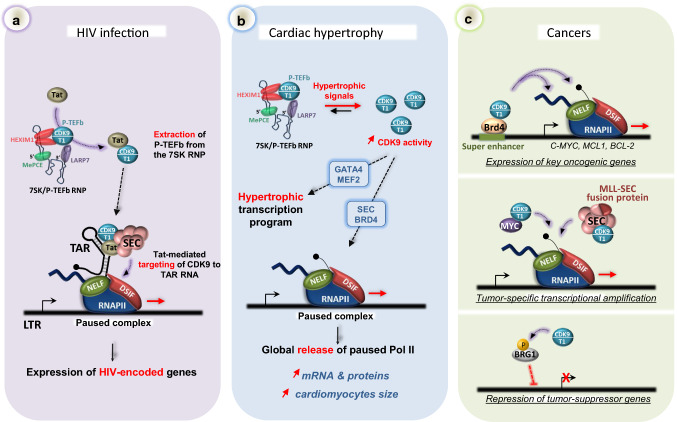Fig. 6.
Involvement of CDK9 in human disease. a CDK9 is a primary target of HIV-1. The virus-encoded protein Tat extracts P-TEFb from the 7SK/P-TEFb RNP and increases the level of active P-TEFb in infected cells. P-TEFb is then tethered to the viral genome through interaction with the TAR structure that forms at the 5′ end of the viral nascent RNA and serves as a landing pad for the P-TEFb/Tat/SEC complex. Once recruited, P-TEFb releases paused RNAPII in the same way as it does on host protein-coding genes. b In cardiomyocytes, hypertrophic signals shift the equilibrium towards the P-TEFb active form. The resulting elevated CDK9 activity leads to the establishment of a hypertrophic transcription program and a global release of paused RNAPII into gene bodies. Elevated transcription leads to an increased level of mRNA and proteins and enlargement of cardiomyocytes. c Misregulation of CDK9 activity can lead to development of cancers. P-TEFb drives the expression of key pro-survival genes such as C-MYC and MCL-1 (top). Mistargeting of P-TEFb by MYC or MLL-SEC fusion proteins promotes tumour-specific transcriptional amplification (middle). P-TEFb represses tumor-suppressor genes through inhibitory phosphorylation of the BRG1 subunit of the BAF chromatin-remodeling complex

